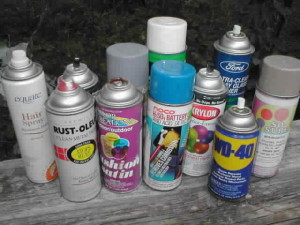 Inhalant abuse and addiction involves hundreds of different chemicals that can be inhaled, sniffed or “huffed”. The goal of sniffing the inhalants is to achieve a mind-altering affect. Most, but not all, inhalants create the desired “high” by blocking oxygen to the brain. The vast majority of inhalants that are abused are everyday products that can be purchased at retail and industrial product stores. Chemicals of abuse that are huffed are very rarely ingested in any other way than by huffing them, thus they fall into a category called “inhalants”. Inhalants are further categorized into three or four groups: Solvents, Gases & Aerosols and Nitrites.
Inhalant abuse and addiction involves hundreds of different chemicals that can be inhaled, sniffed or “huffed”. The goal of sniffing the inhalants is to achieve a mind-altering affect. Most, but not all, inhalants create the desired “high” by blocking oxygen to the brain. The vast majority of inhalants that are abused are everyday products that can be purchased at retail and industrial product stores. Chemicals of abuse that are huffed are very rarely ingested in any other way than by huffing them, thus they fall into a category called “inhalants”. Inhalants are further categorized into three or four groups: Solvents, Gases & Aerosols and Nitrites.
Examples of Abused Inhalants
There are hundreds of products that have the potential for inhalant abuse. Most of the products are inexpensive and readily obtained. Older children and teenagers are the biggest users of inhalants; however nitrites are a distinct category of inhalants more often used by adults because of its effect of heightening a sexual experience. As with any drug, it is also abused as a form of self-medication. Very common examples of inhalants include:
• Kerosene, propane, butane
• Paint thinner, spray paint
• Fingernail polish remover, hair products including hair dye
• Household and automotive cleaners, degreasing chemicals and solvents
• Glues, felt-tip markers
• Shoe shine, some hand sanitizers
• Whipped cream canisters
• Dry cleaning fluid, refrigerants
• Nitrous oxide, chloroform
• Amyl nitrite (“poppers”)
Health Effects of Inhalant Abuse
Inhalant abuse and addiction brings with it many health hazards. The health consequences associated with inhalant abuse can be short or long term. The consequences can also be permanent as in the case of brain damage affecting multiple areas of brain functioning, hearing or vision loss, bone marrow damage, heart failure, liver and kidney damage, reproductive complications, suffocation and death. The younger the inhalant abuser begins huffing and the more the person huffs, the more likely permanent health damage will occur. However, there are documented cases of first-time, healthy users of inhalants experiencing permanent brain damage and/or death.
Signs and Symptoms of Inhalant Abuse
Inhalant abuse and addiction creates symptoms much like those found in someone under the influence of alcohol. Signs and symptoms worsen with increased use; they include:
• Chemical odors on breath or clothes
• Empty chemical containers, chemical-soaked rags or clothes
• Possible burn injuries
• Euphoria, giddiness, disinhibition
• Overly relaxed muscles, drowsiness, loss of coordination
• Slurred speech, confusion, delirium
• Low or no attention span
• Nausea, vomiting, loss of appetite
• Irritability, depression
• Loss of sensation, lightheadedness
• Irregular heartbeat, seizures
• Hallucinations, unconsciousness, coma

